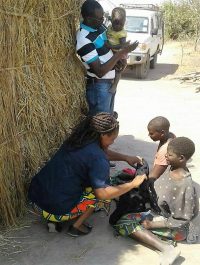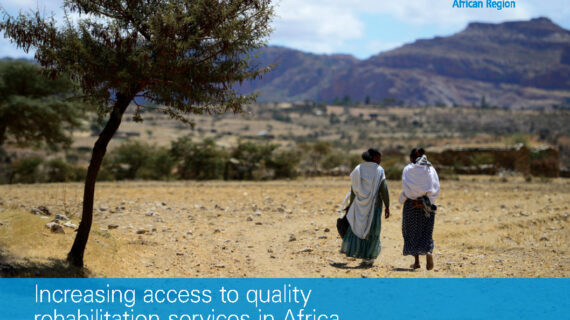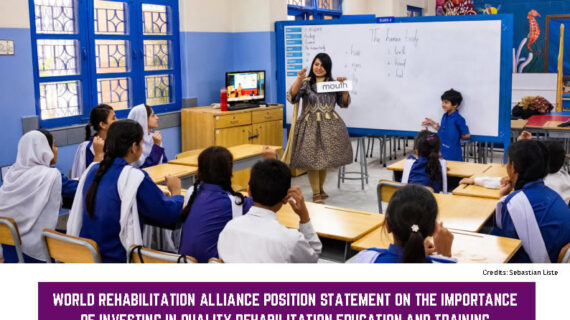Networks promote CBR: lessons from Monze, Zambia
By Sharon Handongwe
Working as a Community-Based Rehabilitation (CBR) practitioner can be very rewarding in building teams and networks. Usually, the teams interact and work closely with grassroots communities. Many a time you are able to witness change in lives while at the same time experiencing pain over the loss of people you had come to know and cherish in your work. The story of Mintinta typifies the level of networking required if CBR is to change lives.
Our story
“Receiving a call on one Sunday from the community is not unusual,” Said Femmy Hanene, the Community Rehabilitation volunteer, about his routine of supporting the implementation of CBR work in Keemba village, Monze town, Zambia, “But when the word ‘emergency’ is involved it means there is something really urgent.”
Hanene added that his work was interesting but it could also be full of painful moments. One particular incident was when he came across a 15-year-old, Shingalile Mutinta, who had a physical disability and was visibly pregnant. Although her D-day was due, she had no idea that any time she could go into labour. Both Hanene and the mother with whom Mutinta lived had no idea how to help the situation. The girl had never been to any health centre for medical attention given that she had an intellectual disability as well. Even knowing the person from whom she’d conceived was a nightmare.
“Mutinta’s story shows the epic of partnership that HFC has with other stakeholders. Every partner has done their part to ensure that the people in this household are taken care of sustainability. What better way to show that the CBR matrix, according to World Health Organization, is fully implemented on an individual!”
To make matters worse, Mutinta’s mother was poor and could not afford even the very basic necessities. It was indeed a hopeless situation. Fortunately, Hanene informed the Holy Family Centre, a CBR organisation in Monze, about the gloomy situation. A team from the Holy Family Centre (HFC) advised him to tell the mother to take Mutinta to Keemba Rural Health Facility for medical attention. Little did the team know that actually while they were busy advising the CRV, the girl had already started labouring and by God’s grace she soon gave birth to a baby girl.
The utterly perplexed Hanene, however, shortly called back with excitement. “She has delivered,” he said, “But there is nothing to feed the baby because she cannot breast feed.” The HFC team made arrangements, which entailed gathering a few important items for a new born from well-wishers and within one hour it had arrived at Keemba community 30km- off the main road to rescue this little angel. The team started off at 03:00pm and arrived at 04:00pm.
What struck us upon arrival was a particular hut standing alone in the wilderness. A quick check showed that the household was indeed very needy; it had no food, no source of livelihood and was struggling. We also learnt that Mutinta had both intellectual and physical disabilities that made independent decision-making very hard for her. It was probably amid this situation that a stranger took advantage of her, to make her pregnant.
Given Mutinta’s condition, HFC engaged other stakeholders such as World Vision, Ministry of Community Development, Social Welfare, Victim Support Unit – Police, Gender Based Violence Unit, Traditional Leadership and the church to come to her rescue. The Traditional leadership immediately started making enquiries concerning who the father of the newly born was. From then on, HFC continued giving the baby an appropriate milk formula. World vision provided the family with four (she) goats for the sustainability of the family. Then the Ministry of Community Development intervened with seed and fertilizer to support the family during the planting season. Another well-wisher gave cowpeas.
The above efforts were however inadequate. Upon realising this, the department of Gender is considering putting Mutinta on family planning as a protective measure. Furthermore, meetings with the headmen, family and stakeholders have been conducted and these have since given an opportunity for all the interested stakeholders to play their different roles in improving the life of Mutinta and the entire household headed by an elderly lady.
An assessment done on Mutinta’s child (Julie), showed she was growing up normally. But she needed regular monitoring since she was at the risk of developing a disability herself because of the socio-economic status of the family. Indeed, at two months Julie had presented with undernourishment as a result of the ignorance of Mutinta’s mother about the quantities of milk to be given to Julie and the number of times she had to be fed each day. The family has since been given education on the process of nourishment and the importance of this for Julie who is bottle-fed.
Though World Vision has given four goats and the ministry of community development has provided a food security pack (fertilizer and seed), these are long-term and the problem at the moment is the continued supply of food and other necessary items like soap and diapers for Julie.
Mutinta’s story shows the epic of partnership that HFC has with other stakeholders. Every partner has done their part to ensure that the people in this household are taken care of sustainability. What better way to show that the CBR matrix, according to World Health Organization, is fully implemented on an individual! Furthermore, it is interesting to see how the community comes together to ensure that what they have to do is done and with efficiency.
The writer of this article is a CBR coordinator at the St Johns Holy Family Centre







